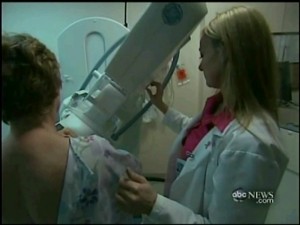The Critical Importance of Message Development
By Eric Seidel, CEO
The Media Trainers®
The most egregious mistake made by the U.S. Preventive Services Task Force before releasing its recent report on mammograms was either the failure to prepare a comprehensive and understandable communications plan, or believing what sounded like double-speak to lay people and even other doctors would be quite clear. Also, you have to wonder if the task force failed to anticipate the controversy it would be igniting.
Its spokespersons have served only to confuse and contribute to women’s concerns.
I’ve embedded several pieces of video in this post, making it longer than most. But if you’re looking to make a case for thorough message preparation and practice, then please take the time to watch each of them. And feel free to share this post with others.
What I’ve gleaned from the stories I’ve seen and read, the report’s conclusion is that women under 50 should consult their physicians and then decide for themselves about the need and frequency for mammograms. I’m not interested in arguing the wisdom of that; I’m not a doctor.
The task force’s report has incited concern, anger, debate and vociferous disagreement, all fueled by a flurry of ambiguous and confusing statements and interviews. Their repeated missteps have managed to keep the story alive for a number of news cycles.
CNN American Morning co-anchor Kiran Chetry interviewed a breast cancer survivor who is well under 50 and, fortunately, discovered a tumor, thanks to routine testing. Then, Chetry turned to task force member Dr. Lucy Marion, Ph.D., RN and dean of the School of Nursing at the Medical College of Georgia (click on video).
CNN’s resident medical expert, Dr. Sonjay Gupta, participated in the interview and, as he listened, you could see the concern—if not anger—tighten his facial expressions. He questioned Marion–quite legitimately–from a doctor’s perspective on how to advise patients (click on video).
As confusion mounted, anchor Chetry asked Dr. Marion about the possibility of the task force reconsidering its recommendations (click on video).
The live interview ended there. But Gupta’s concerns did not. He continued interviewing Lucy Marion off-air and then played it back later in the morning, wondering how the task force’s value of a human life came into play (click on video).
Meanwhile, ABC’s John McKenzie interviewed another U.S. Preventive Services Task Force member, Dr. Timothy Wilt. The result was only slightly better (click on video).
Like CNN’s Chetry, McKenzie asked Wilt if the task force might reconsider (click on video).
Yet a third task force member did tell correspondent McKenzie that she is consulting with fellow members on ways to clarify their message.
There’s an old saying, “Better late than never.” But you have to wonder if, in this case, it’s too late, that too much damage has been done by the task force because of its inability to deliver a clear and compassionate message.
Also the body language of Drs. Marion and Wilt did nothing to help them. Their wandering eyes and, in Marion’s case occasionally closing her eyes for a protracted period of time, detracted from their credibility and made me wonder if even they believe in the conclusions of the task force. Clearly, neither one seemed very comfortable with the messages.





As a former journalist and p.r. person, I, too, have watched in fascination as this has played out. The problem is not just that the task force members failed to take into account the need to develop a clear message. The bigger part of the problem is that their own recommendation was bound to snare them as soon as it went public, regardless of how well they positioned themselves in advance.
For journalists, this story was low-hanging fruit. I can hear the assignment editor now: “The task force doesn’t want routine mammograms for women under 50; you reporters head out there and find women in their 40s with breast cancer, interview them, and we have a great story.” Any experienced p.r. expert could have predicted this was going to happen.
The lesson here is that communications people are not just an “add-on,” a group of people you run to for message development after all the work is finished. You had better have them at the table during the development phase. Their input may change the direction you choose to go.